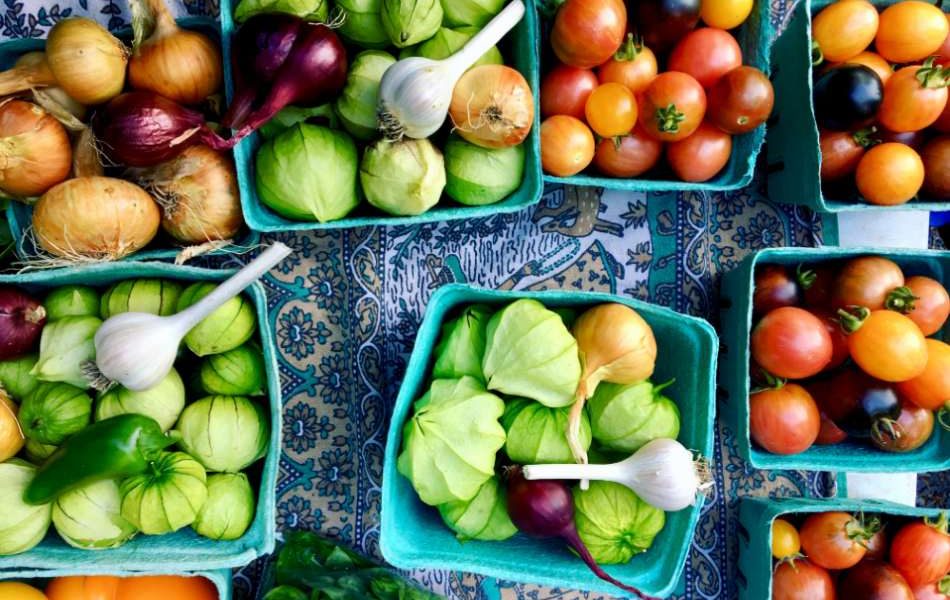Right now, we have more time than ever to cook at home and every reason to consider what we’re putting on our plates. If you’re looking to embrace a healthy eating plan, it can be hard to know where to start and how to make it stick.
So we’ve put together some tips for changing up your diet for healthy eating. Take it slow and start small, eventually you’ll have habits that are healthier for you and the planet.
Look for local and organic
These are the top 2 things to look out for, especially when it comes to fruit and veg. The more local your produce, the less it has to travel. You support our local farmers while getting fresher, tastier food with a lower footprint. If you opt organic too, it means you can avoid pesticides and other environmentally unfriendly practices. Win, win, win. If you’re on a healthy eating budget, farmers markets are your friend.
For those unable to reach their local market, or for anyone feeling a little lazy, there’s a bunch of great produce box services that home deliver. For fresh and organic produce delivered to your door, check out local growers like Community Organics, Hillview Farms and Ooooby, or to update your pantry staples try ethical curators Part & Parcel.
Focus on waste
The average Australian household throws an average of $3,800 worth of groceries in the bin every year. Crazy, right?
When we waste food, we are tossing away resources. So if you minimise your waste, you minimise your impact. It usually comes down to having a plan. Try prepping your meals and get into the habit of having a good look in the pantry before you head out to the shop.
Simply basing your healthy eating recipes around what you have on hand and preferencing meals that can be frozen will do wonders for your waste. Remember to keep an eye on the fridge too; when fresh produce is about to go — get roasting.
Moderate your meat
Compared to plants, animals contribute more emissions and need a lot more of everything: food, water, land and energy. Beef and lamb in particular are the ones to watch out for, but you can be more generous with pork, chicken and seafood, which are better for both the environment and your bod. If you’re currently baulking at the idea of a steakless existence, you can make a difference by cutting your consumption step by step.
Did you know you can get all your protein from plants? You just need to get yourself acquainted with chickpeas, nuts and lentils. Anyone who thinks a plant based diet can’t be delicious, probably hasn’t discovered Deliciously Ella or Plant Proof yet.
If you’re not ready to drop meat from your diet altogether, try one or two healthy eating, meat-free days a week and work your way up from there. You can even try simply switching out one meaty element from your meal at a time.
In season and in abundance
Foods grown out-of-season require a lot of energy and chemical help. If that produce is coming from overseas, there’s the added environmental cost of shipping your avocado halfway around the world. Chances are your tomato is going to be picked prematurely and treated to survive the shipping, too. So try to source your food from locals who practice sustainable farming and get fresher produce while you’re at it.
You can get some pretty nice prints to help remind you what’s currently in season. Soon berries will become something reserved for summer and it makes them all the more enjoyable. As long as they’re fresh and in abundance, you’re doing your part.
While we’re talking abundant foods, fish may be the more sustainable meat option, but some species are produced in ways that can be harmful to the environment or the sea food chain. So double check before you start gleefully shovelling that bluefin tuna into your mouth.
Cook thoughtfully, eat mindfully
Simply thinking about what you’re going to put on your plate will help you keep a greener diet. Plan meals and you’re more likely to choose sustainable recipes and ingredients, and less likely to waste. Being conscious in your cooking is a great first step, but don’t forget to keep it going into your meal time. Focusing on what you’re eating as you’re eating gives you a chance to reflect on your food and its impact.
Plus, taking your time will help you check in with your hunger levels too, allowing yourself time to digest. You might find you didn’t need to dish up quite as much as you thought and smaller portions can offer more stretch in your grocery shop — saving time, cash and the planet.
Need more inspiration?
From weekend travel inspiration, conscious brands to shop and farm to table dining spots; to sustainable living news and wellbeing essentials – This Weekend is the first sustainable living guide for millennials.






